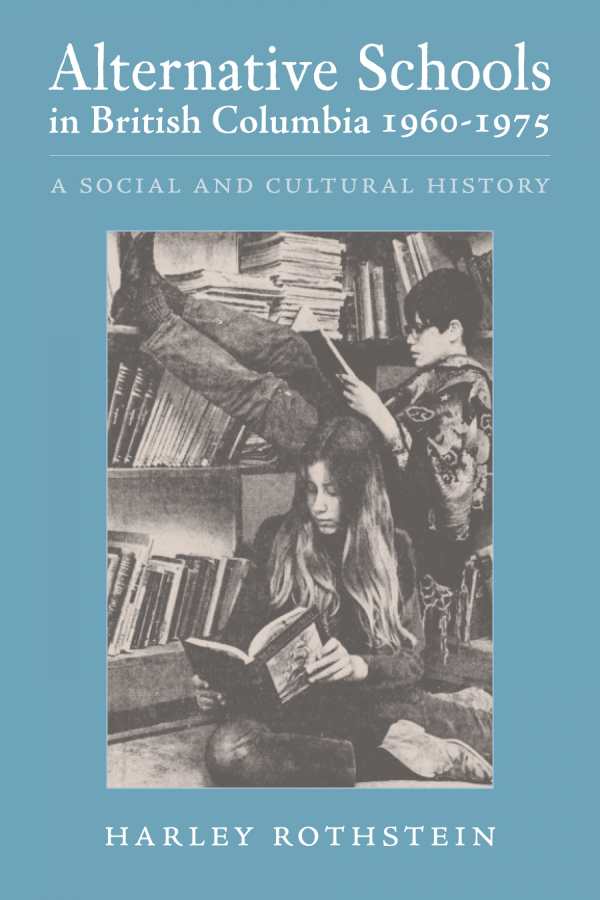Alternative Schools in British Columbia, 1960-1975
A Social and Cultural History
Alternative Schools in British Columbia, 1960–1975 is a comprehensive and cogent history of a movement that prompted progressive changes in Canadian education.
Harley Rothstein reviews the birth, decline, and legacy of the alternative school movement in his historical study Alternative Schools in British Columbia, 1960–1975.
By the early 1960s, progressive educators and parents in British Columbia and throughout Canada had grown disenchanted with the rigid, rote, even abusive style of teaching used in the public school system, Rothstein notes. Through the creation of alternative schools, they provided students of varying ages and abilities with a unique opportunity to learn at their own pace and focus on topics of interest to them. Though some of their schools lasted only a few years and all of them experienced financial and ideological struggles throughout their existence, the book argues that their collective impact was considerable, paving the way for more creative and inclusive teaching methods in all schools.
The book is accessible as it relates the stories of ten alternative schools, each with its own methodology. The ten are bound by their founders’ dislike and distrust of public schools. At least one chapter is devoted to each school, and all follow the same basic pattern of reviewing the school’s origins, curriculum, management, and relationship to the larger community. The chapters end with an autopsy of each school’s decline. In the process, they reveal several common factors: the idealism of the schools’ founders often outweighed practical considerations, making them vulnerable to internal disagreements over how much academic and personal freedom to provide students and resulting in financial strain. Further, by the mid-1970s, the public school system had adopted more progressive teaching methods itself.
Despite the book’s clear admiration for the goals of alternative schools, it remains fair and even critical at times, highlighting the movement’s shortcomings and supporting its arguments with ample evidence. Extensive interviews with those who participated in alternative schools reveal the positive and negatives of both individual schools and of the educational philosophies that governed them, including progressive, romantic, and therapeutic philosophies. A vast array of primary and secondary documentary sources is present to support the book’s arguments, demonstrating the schools’ inner workings while also contextualizing them in terms of contemporary cultural shifts.
The book’s arguments are organized in a logical order that illuminates the movement’s evolution from disparate countercultural endeavors to an accepted part of the British Columbia public school system. The study illustrates through both prose and photographs the ways in which alternative school programs and experiences were ahead of their time, both meeting and creating demand for the educational approach they offered. It is a comprehensive and cogent examination of a movement that, despite serious flaws, was so successful it engendered its own demise.
Alternative Schools in British Columbia, 1960–1975 is an academic text about the history of alternative schooling and how it changed the face of education in Canada.
Reviewed by
Eileen Gonzalez
Disclosure: This article is not an endorsement, but a review. The publisher of this book provided free copies of the book and paid a small fee to have their book reviewed by a professional reviewer. Foreword Reviews and Clarion Reviews make no guarantee that the publisher will receive a positive review. Foreword Magazine, Inc. is disclosing this in accordance with the Federal Trade Commission’s 16 CFR, Part 255.

